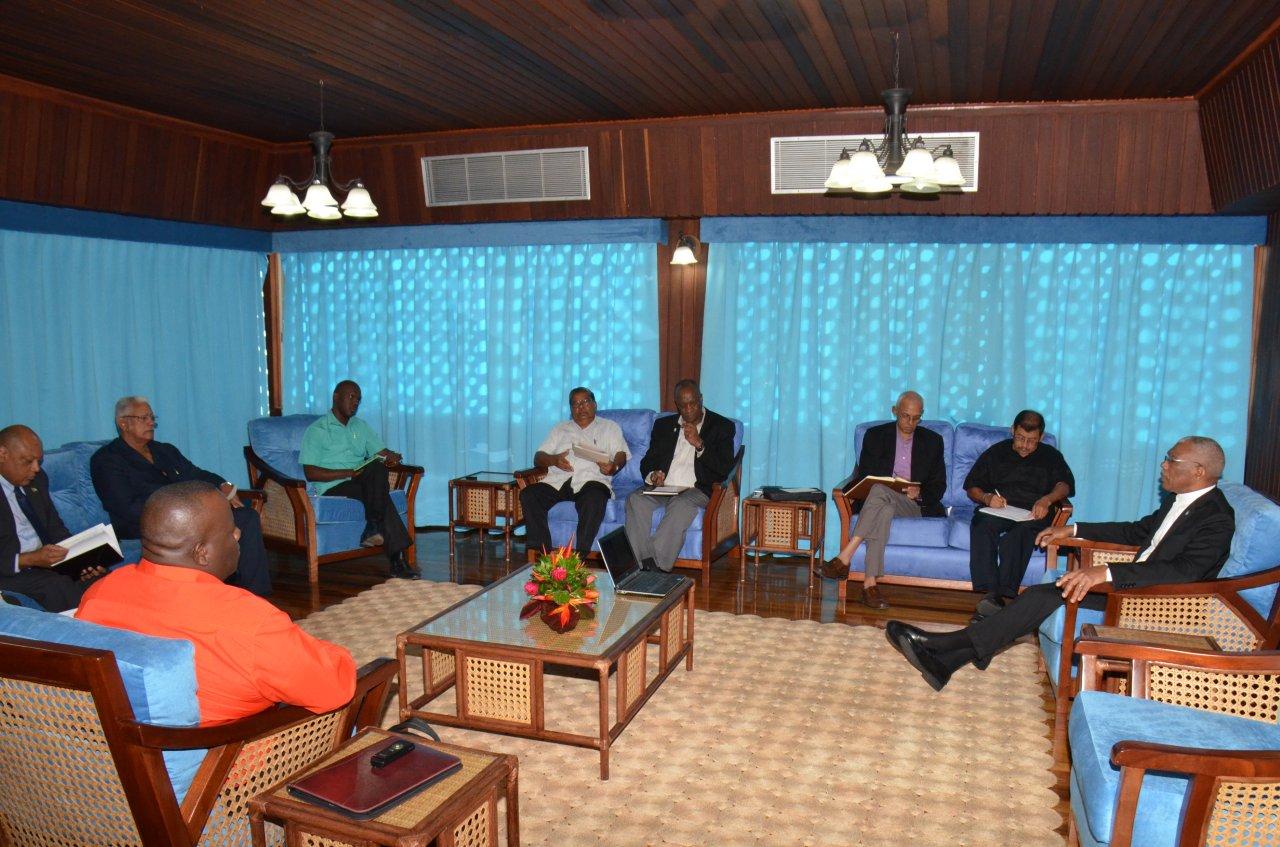Amid months of arid weather that has ruined rice fields and threatened wider devastation in areas like Region Nine, President David Granger today announced the establishment of a ministerial task force to combat the effects of the El Nino phenomenon.
A release from the Ministry of the Presidency said that Granger called a meeting this morning to facilitate increased ministerial collaboration for the boosting of plans to prepare for future cycles of dry weather.
At the meeting, Granger instructed that a Ministerial Task Force be convened under the leadership of the Ministry of Agriculture to be responsible for an action plan that focuses on immediate relief for affected communities. The release said that the Task Force will also focus on medium and long term plans, including the drilling of extra wells and increased water harvesting when the rainy season returns.
The release said that while a Task Force has been working under the Civil Defence Commission (CDC) since October 2015, the President noted that there was a need for broader ministerial collaboration. The current Task Force will continue to operate and will report on its activities to the CDC. This body will encompass, in addition to the CDC, the Ministry of the Presidency, represented by the Minister of State, the Ministry of Natural Resources and the Environment, the Ministry of Communities and the Ministry of Indigenous People’s Affairs.
All the key agencies, within the Ministries, with responsibility for various aspects of tackling the El Niño impact will be involved in the work of the Task Force. This includes the National Drainage and Irrigation Authority, the Guyana Water Incorporated, the Environmental Protection Agency, the Guyana Rice Development Board and the Regional Democratic Councils (RDC). In addition, the Ministry of Public Health will provide a representative to focus on potential risks for water-borne illnesses and related matters.
Chairman of the NDIA, John Piggott has been identified to chair the body. The work of the Task Force will be resourced after the completion of an approved action plan.

The release said that during the meeting, Minister of State Joseph Harmon, Minister of Indigenous Peoples’ Affairs, Sydney Allicock, Minister of Natural Resources and the Environment, Raphael Trotman, Minister of Agriculture, Noel Holder, Minister of Communities, Ronald Bulkan and the Director of the CDC, Chabilall Ramsarup provided an update to the President on the situation and the work that they have been doing to tackle the now 10-month-old dry spell.
The release said that it was noted that Upper Takutu-Upper Essequibo (Region 9) is the worst affected area. However, Pomeroon-Supenaam (Region 2), Essequibo Islands-West Demerara (Region 3), Mahaica-Berbice (Region 5) and East Berbice-Corentyne (Region 6) are also affected to varying degrees, particularly in rice farming and agricultural areas.
El Niño–Southern Oscillation refers to the variation in winds and sea surface temperatures over the tropical eastern Pacific Ocean. This affects much of the tropics and subtropics. The warming phase is known as El Niño and in this part of South America produces drought-like conditions.
Weather watchers had said it would begin weakening by April. May-June is the next period of anticipated rains here.




